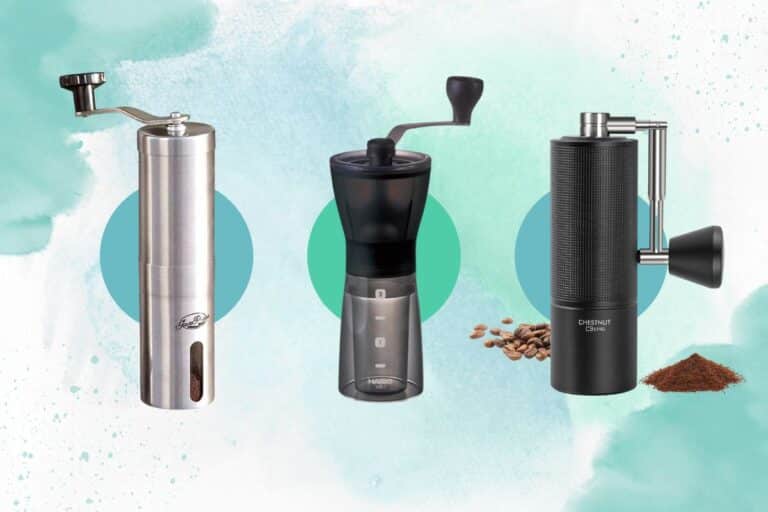People around the world love drinking coffee made from roasted beans that come from the Coffea fruit. But there’s another kind of coffee called green coffee. It’s made from the same fruit’s seeds but without roasting them. This keeps them green and changes their chemical makeup. The big difference between green coffee and the regular kind we all know is how people handle the beans after they pick them.
Roasting coffee beans is what usually makes coffee smell and taste so good. But roasting changes a lot of things in the beans, like lowering the amount of chlorogenic acid. People think this acid is really good for your health. Green coffee doesn’t get roasted, so it has more chlorogenic acid than regular coffee. That’s why more and more people interested in health are starting to drink it.
Green coffee also has a little less caffeine than roasted coffee, but it can still wake you up. It tastes different too – more like herbs and grass and not as bitter. Some people might like this new taste more than the usual coffee flavor.
When we talk about green coffee and regular coffee, it’s not just about how they look or what’s inside them. It’s also about how they affect our health, how we make and drink them, and what they mean for the environment. Green coffee gives people another choice for their morning drink, promising health benefits while keeping the cozy feeling of sipping a warm cup.
What is Green Coffee?
Green coffee refers to unroasted coffee beans, which are high in chlorogenic acid, believed to offer health benefits such as weight loss, antioxidant effects, and improved cardiovascular health. Unlike roasted coffee, green coffee has a milder taste and retains its natural green color. While it shows potential for various health benefits, further research is needed, and it’s advisable to consult a healthcare professional before consuming green coffee products.
The Basics of Green Coffee

Green coffee comes from the unroasted seeds or beans of the Coffea plant. Instead of going through a big change like roasted coffee during roasting, green coffee beans keep their natural state, color, chemical makeup, and nutritional goodness.
What is Green Coffee
In simple terms, green coffee is the coffee fruit’s natural and untouched seed. Before turning into the brown, smell-good beans we all enjoy, people take these seeds out of the fruit, clean them, and dry them. These beans stay green and taste a lot different from the roasted ones. They’re full of things like chlorogenic acids, which get mostly lost when you roast them.
How Green Coffee Differs from Roasted Coffee
Turning green coffee into roasted coffee involves a few steps, but roasting changes the game. Green beans are soft and spongy and smell like grass. They taste a bit bitter because of certain compounds that roasting changes.
- Green Coffee Processing: After picking the coffee cherries, folks process them to get rid of the fruit layers around the green bean. Then, they dry the bean to cut down on moisture. They can dry beans in the sun (dry method) or get rid of the pulp and let the beans ferment before drying (wet method). This step is key to stop the beans from going bad and gets them ready to store or send off.
- Roasting Process: Roasting turns green beans into the brown, fragrant beans we brew. This step heats the beans at high temps, making chemical reactions that bring out new flavors, smells, and colors. The longer you roast, the darker the beans and the more they change from their natural state. Roasting lowers the chlorogenic acid in the beans but ups their antioxidant power by creating new stuff.
Where Green Coffee Beans Come From
Coffea plants give us green coffee beans, mainly the Coffea arabica and Coffea canephora (robusta) types, grown in over 70 countries near the equator. Where they grow, including the soil, altitude, and weather, really affects how the beans taste, which is why there are so many coffee flavors and types.
- Arabica vs. Robusta: Arabica beans taste smooth and complex, sometimes fruity or sugary, and have less caffeine than robusta beans. Robusta beans taste stronger and more bitter and are seen as lower quality but can handle pests and weather changes better.
- Single-Origin and Blends: You can have green coffee from just one place (single-origin) or mixed from different areas (blends). Single-origin coffees show off flavors special to where they grow, while blends mix beans to get a steady flavor that matches well.
Getting to know green coffee, from what it is, how it’s different from roasted coffee, to where it comes from and the types of beans, sets the stage for diving into its health perks, how we drink it, and its spot in the world of coffee.
Nutritional Profile and Health Benefits of Green Coffee
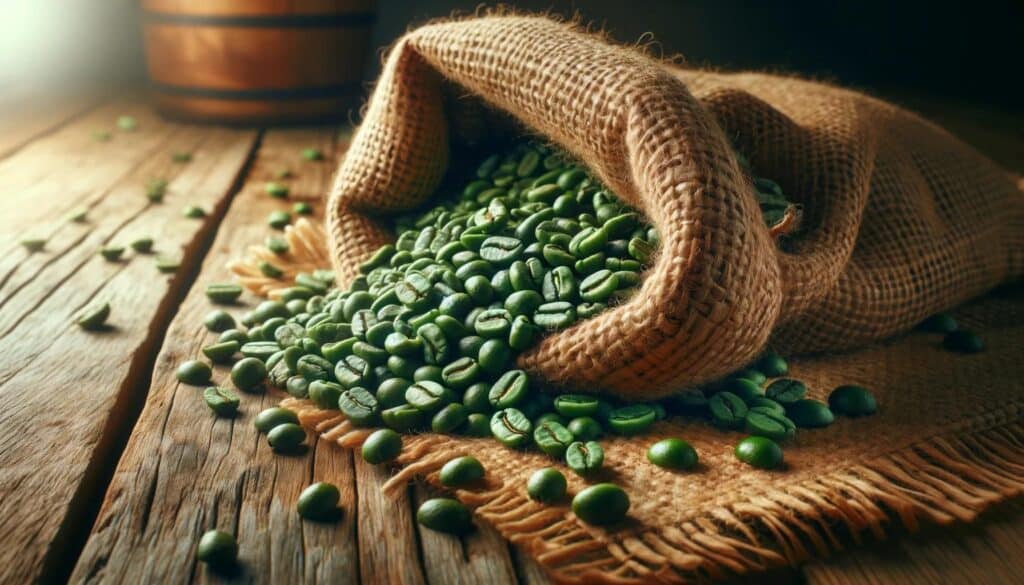
Green coffee beans, being less processed than their roasted counterparts, retain a unique nutritional profile that contributes to their health benefits. The presence of various compounds, including chlorogenic acid, plays a significant role in these benefits, which range from weight loss support to improved metabolic health.
Key Nutrients in Green Coffee
- Chlorogenic Acids (CGAs): Green coffee beans are rich in chlorogenic acids, a group of antioxidant compounds that have been shown to have various health benefits, including anti-inflammatory and blood pressure-lowering effects.
- Caffeine: While the caffeine content is slightly lower in green coffee than in roasted coffee, it still provides a stimulant effect, which can boost metabolism and support fat burning.
- Fibers and Micronutrients: Although in small amounts, green coffee beans contain essential nutrients and fibers that contribute to overall health.
Health Benefits of Green Coffee
- Weight Loss: Green coffee has gained popularity for its potential to support weight loss. The chlorogenic acids in green coffee are thought to affect how the body handles blood sugar and metabolism, potentially leading to reduced body fat. Studies have suggested that chlorogenic acid can decrease the absorption of carbohydrates from the digestive tract, lowering blood sugar and insulin spikes.
- Blood Sugar Regulation: The chlorogenic acids in green coffee may help in lowering blood sugar levels and potentially reduce the risk of developing type 2 diabetes. This effect is thought to be due to the influence of CGAs on the glucose metabolism in the liver and their impact on insulin sensitivity.
- Antioxidant Properties: Green coffee beans are rich in antioxidants, which help in combating oxidative stress and reducing the risk of chronic diseases such as heart disease and cancer. The high levels of chlorogenic acids contribute to these antioxidant properties, providing a protective effect against cellular damage.
Review of Scientific Studies Supporting Health Claims
- Weight Loss Studies: A notable study published in the “Journal of International Medical Research” found that participants who consumed green coffee extract experienced significant weight loss compared to those who did not. This study highlights the potential of green coffee extract as a weight loss supplement.
- Blood Sugar Regulation: Research published in “Diabetes Metabolic Syndrome and Obesity” demonstrated that green coffee extract could significantly reduce blood glucose levels in mice, suggesting a potential benefit for blood sugar regulation in humans.
- Antioxidant Effects: A study in the “Journal of Agricultural and Food Chemistry” showed that the antioxidant activity of green coffee extract could effectively reduce oxidative stress in rats, highlighting its potential health benefits beyond weight management.
It’s important to note that while the existing research on green coffee is promising, many studies are small or conducted on animals. More extensive human studies are needed to fully understand the extent of green coffee’s health benefits. Nonetheless, the nutritional profile and the preliminary health benefits identified through scientific research make green coffee a subject of growing interest in the health and wellness community.
How Green Coffee Is Consumed

The consumption of green coffee has evolved significantly over time, with traditional methods giving way to more modern forms that cater to contemporary health and wellness trends. Below, we explore the various ways in which green coffee is consumed, from its traditional forms to the innovative products available today.
Traditional Methods of Consumption
Traditionally, green coffee beans were sometimes consumed raw or after a light roasting, often brewed similarly to herbal teas. In some cultures, green coffee beans were ground and boiled in water, creating a mild, somewhat grassy-flavored beverage. This traditional method of consumption is less common today, primarily due to the prevalence of roasted coffee and the development of more palatable forms of green coffee products.
Modern Green Coffee Products
- Supplements: One of the most popular ways to consume green coffee in modern times is in the form of dietary supplements. These supplements usually contain green coffee extract, which is made from the beans themselves. They’re marketed primarily for their weight loss benefits and are available in capsule or tablet form.
- Extracts: Green coffee extract is also available as a liquid or powder, which can be added to water or other beverages. This extract is concentrated and provides a more direct intake of the active compounds found in green coffee, including chlorogenic acids.
- Beverages: Ready-to-drink green coffee beverages have also entered the market, offering a more accessible and enjoyable way to consume green coffee. These beverages often combine green coffee extract with other flavors and ingredients to improve the taste, making them an appealing alternative to traditional coffee drinks.
Tips for Selecting and Using Green Coffee
- Quality Matters: When selecting green coffee products, whether beans, supplements, or extracts, look for high-quality products from reputable sources. The product should ideally be organic and free from unnecessary additives or fillers, especially if you’re choosing supplements.
- Consider the Form: Depending on your preference and lifestyle, you might opt for green coffee beans, extract, or supplements. Beans can offer a more authentic experience but require preparation. Extracts and supplements offer convenience and a more controlled intake of green coffee’s active compounds.
- Dosage and Safety: Always follow the recommended dosage on the product label, especially for supplements and extracts. While green coffee is generally considered safe, consuming too much can lead to side effects similar to those of too much caffeine, such as jitteriness, upset stomach, or trouble sleeping.
- Consult a Healthcare Professional: Before adding green coffee products to your routine, especially if you intend to use them for specific health benefits like weight loss or blood sugar regulation, it’s wise to consult with a healthcare professional. This is particularly important if you have underlying health conditions or are taking medications.
Green coffee’s unique nutritional profile and potential health benefits make it an intriguing option for those looking to diversify their caffeine intake or explore natural health supplements. Whether through traditional brewing methods or modern supplements and extracts, green coffee offers a versatile and health-conscious choice for consumers worldwide.
The Taste Experience of Green Coffee
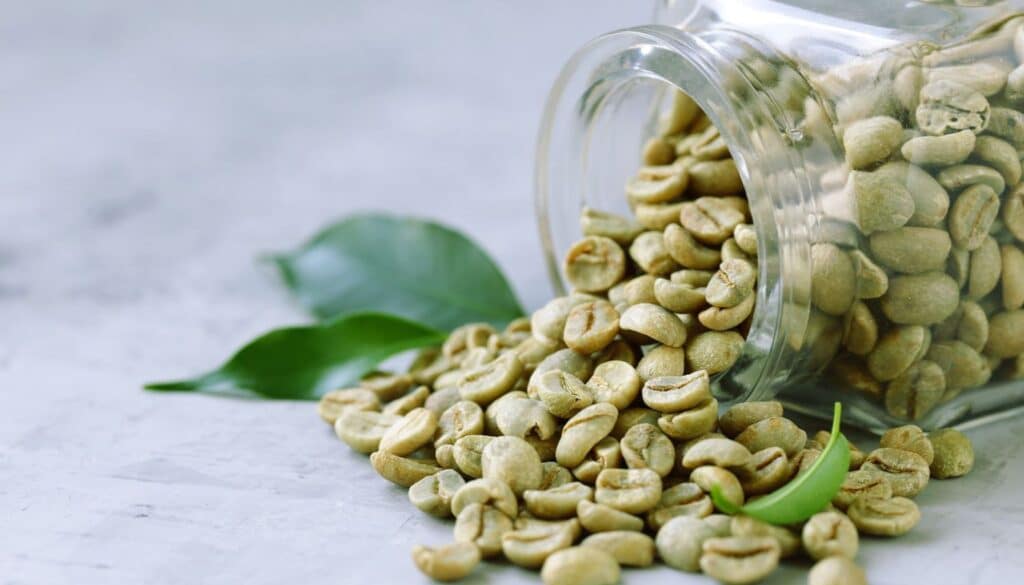
The transition from green to roasted coffee represents not just a physical transformation but a culinary journey, deeply altering the beans’ flavor profile, aroma, and overall sensory experience. Understanding this evolution is essential for both coffee aficionados and newcomers navigating the diverse world of coffee tastes.
Flavor Profile of Green Coffee Compared to Roasted Coffee
Green coffee beans offer a vastly different taste experience compared to their roasted counterparts. The primary characteristics of green coffee’s flavor include:
- Grassy and Herbal: The most immediate difference is a pronounced grassy and herbal quality, reminiscent of green or herbal teas. This reflects the beans’ natural state and the absence of roasting-induced flavors.
- Less Bitter, More Acidic: Green coffee tends to be less bitter than roasted coffee but can have a higher perceived acidity, giving it a sharper taste that may not appeal to all palates.
- Mild and Underdeveloped: Without the roasting process, the rich, complex flavors typical of coffee are underdeveloped in green coffee, resulting in a milder taste that lacks the depth and richness of roasted beans.
How Roasting Affects Taste and Aroma
Roasting is a catalyst for a complex chemical process that dramatically transforms the green coffee beans:
- Maillard Reaction: This chemical reaction between amino acids and reducing sugars in the beans occurs during roasting and is responsible for developing rich, complex flavors and brown colors. It introduces a range of flavor notes, from nutty and chocolatey to caramel and smoky.
- Reduction of Chlorogenic Acids: The roasting process significantly reduces the levels of chlorogenic acids in coffee beans, which contributes to reducing the acidity and bitterness found in green coffee.
- Development of Aroma: The roasting process also helps develop the beans’ aroma, making it more appealing and contributing to the coffee’s overall flavor profile. The aromatic compounds produced during roasting are what make coffee one of the most sensorially engaging beverages.
Brewing Methods and Their Impact on Flavor
The method used to brew coffee can further influence the flavor profile of both green and roasted coffee, highlighting different aspects of their taste:
- For Green Coffee: Brewing methods for green coffee are generally simpler, often involving steeping the ground beans or consuming them as a part of health supplements. The brewing method can affect the extraction of chlorogenic acids, impacting the beverage’s final taste and health benefits.
- For Roasted Coffee: Traditional brewing methods, including espresso, pour-over, French press, and cold brew, can emphasize different flavor notes and qualities of the coffee. For example, espresso highlights the richness and body, pour-over can accentuate floral and fruity notes, and cold brew tends to reduce acidity, resulting in a smoother drink.
Whether exploring the nuanced world of green coffee or savoring the rich diversity of roasted coffee flavors, the journey from bean to cup is a remarkable fusion of science, art, and personal preference. Each step, from roasting to brewing, plays a crucial role in shaping the final taste experience, offering an endless landscape of flavors to discover and enjoy.
Potential Side Effects and Considerations of Green Coffee

While green coffee has gained popularity for its potential health benefits, it’s important to approach its consumption with an understanding of the safe consumption guidelines, potential side effects, and considerations regarding its caffeine content.
Safe Consumption Guidelines
- Moderation is Key: As with any supplement or food product, consuming green coffee in moderation is crucial. While specific guidelines may vary, sticking to the recommended dosages on product labels or as advised by a healthcare professional is important.
- Quality of Product: Choosing high-quality green coffee products from reputable sources can help minimize the risk of contaminants or adulteration, which could lead to adverse effects.
Potential Side Effects and Contraindications
- Gastrointestinal Distress: Some individuals may experience gastrointestinal issues, such as stomach upset, diarrhea, or discomfort, particularly when consuming green coffee extract or supplements in high doses.
- Anxiety and Restlessness: Due to its caffeine content, overconsumption of green coffee can lead to symptoms of anxiety, jitteriness, and restlessness, similar to other caffeinated products.
- Impact on Blood Pressure: While green coffee may have beneficial effects on blood pressure, the caffeine content can cause a temporary increase in blood pressure in some individuals, particularly those sensitive to caffeine or with pre-existing hypertension.
- Interactions with Medications: Green coffee and its extracts can interact with certain medications, including those for diabetes and blood pressure. The chlorogenic acid in green coffee may influence how the body handles sugar and could interfere with the effectiveness of diabetes medications.
Discussing the Caffeine Content in Green Coffee
- Caffeine Levels: Although green coffee beans contain caffeine, the amount is usually less than that found in roasted coffee. However, the concentration can vary in supplements and extracts, making it important to check product labels.
- Sensitivity to Caffeine: Individual tolerance to caffeine varies widely. Those who are sensitive to caffeine may need to limit their intake of green coffee to avoid unwanted side effects such as insomnia, palpitations, or increased heart rate.
- Balancing Consumption: For individuals consuming other sources of caffeine throughout the day, balancing total caffeine intake to avoid exceeding recommended limits is essential. The general guideline for most adults is up to 400 milligrams of caffeine per day – about the amount in four 8-ounce cups of brewed coffee, but this includes all sources of caffeine, not just coffee.
In conclusion, while green coffee can be a beneficial addition to one’s diet, it should be consumed with an awareness of the potential side effects and considerations, especially regarding its caffeine content. Consulting with a healthcare professional before incorporating green coffee, particularly in supplement form, into your routine is advisable, especially for those with underlying health conditions or who are pregnant or breastfeeding.
Environmental Impact and Sustainability of Green Coffee

The coffee industry’s environmental impact is a growing concern, with sustainability efforts focusing on reducing the carbon footprint from farm to cup. Green coffee, being closer to its natural state than roasted coffee, presents unique opportunities and challenges in terms of ecological benefits and sustainability.
The Ecological Benefits of Consuming Green Coffee
- Lower Energy Consumption: The primary ecological benefit of consuming green coffee lies in the energy savings during processing. Since green coffee is not roasted, it bypasses the energy-intensive roasting phase, which requires high temperatures for extended periods. This results in a lower overall energy use for green coffee compared to its roasted counterpart.
- Reduced Greenhouse Gas Emissions: The roasting process not only consumes a significant amount of energy but also produces greenhouse gases, including carbon dioxide. By eliminating this step, green coffee has a potentially lower carbon footprint.
- Potential for Reduced Packaging and Transportation Weight: Green coffee beans are lighter and more compact than roasted beans, which may result in lower transportation costs and emissions. Additionally, the longer shelf life of green coffee can lead to more sustainable packaging options, as there is less urgency in protecting the beans from degradation.
Comparing the Carbon Footprint: Green vs. Roasted Coffee
A comparison between the carbon footprint of green and roasted coffee must consider several factors:
- Roasting: As mentioned, the roasting process is energy-intensive and contributes significantly to the carbon footprint of coffee. Green coffee omits this step, suggesting a lower overall environmental impact.
- Transportation: While green coffee might be lighter, the bulk of coffee’s carbon footprint often comes from transportation, especially when shipped over long distances. Efforts to reduce transportation emissions are crucial for both green and roasted coffee.
- Packaging and Preservation: Green coffee’s longer shelf life reduces the need for vacuum-sealed packaging, which is often used for roasted coffee to preserve freshness. Sustainable packaging solutions can further minimize the environmental impact.
Sustainable Farming Practices for Green Coffee Beans
Sustainable farming practices are vital for reducing the environmental impact of both green and roasted coffee. These practices include:
- Shade-Grown Coffee: Cultivating coffee under the canopy of existing forest trees, which reduces deforestation, conserves biodiversity, and provides a natural habitat for wildlife.
- Organic Farming: Avoiding synthetic pesticides and fertilizers in coffee farming not only protects the environment but also preserves the soil’s health and water quality.
- Water Conservation: Implementing water-efficient processing methods, especially in the washing and fermentation stages, to minimize water usage and pollution.
- Fair Trade and Direct Trade: Supporting these practices ensures that farmers receive a fair price for their coffee, promoting economic sustainability and encouraging environmentally friendly farming practices.
Embracing green coffee consumption, alongside advocating for sustainable farming practices and responsible sourcing, can contribute to the broader goal of minimizing the coffee industry’s environmental footprint. Consumers, producers, and retailers all play a role in this endeavor, from the choices made at the point of purchase to the advocacy for policies and practices that support sustainability at every stage of the coffee supply chain.
The Economic Perspective on Green Coffee
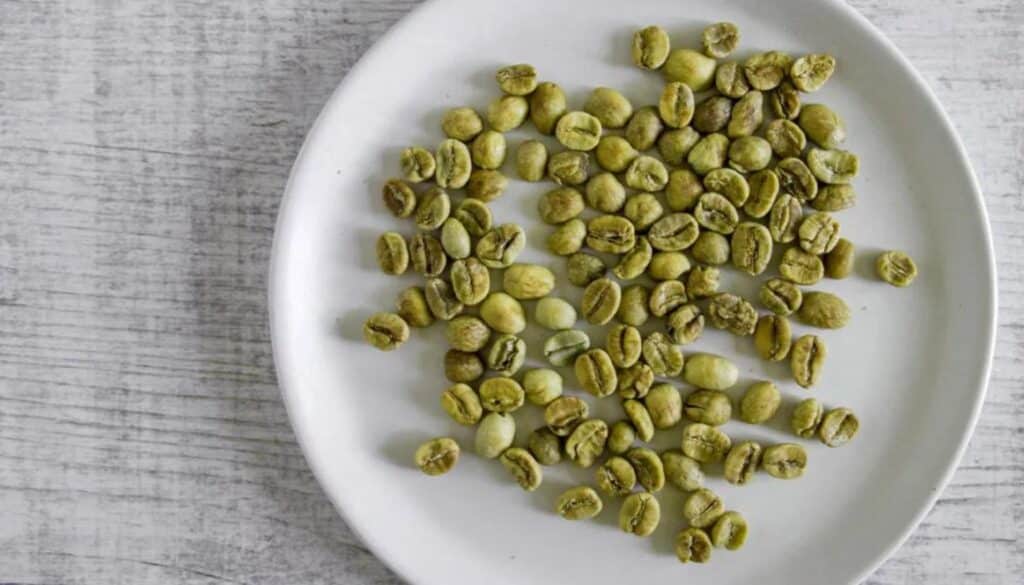
The green coffee market plays a significant role in the global economy, especially within the coffee supply chain. Understanding the economic dynamics of green coffee involves examining global market trends, its impact on farmers and communities, and the challenges inherent in the green coffee trade.
Global Market Trends for Green Coffee
- Increasing Demand: The demand for green coffee has been rising, partly due to the growing interest in specialty coffee and sustainable, traceable coffee beans. Consumers’ increasing preference for quality and sustainability has driven demand in both developed and emerging markets.
- Price Volatility: The prices of green coffee on the global market can be highly volatile, influenced by factors such as weather conditions in major coffee-producing countries, political instability, and changes in global demand. This volatility affects producers, exporters, and importers alike.
- Direct Trade and Specialty Markets: There has been a notable shift towards direct trade practices, where coffee roasters buy directly from farmers or cooperatives, often at a premium over the market price. This trend supports better quality coffee and more sustainable farming practices, contributing to the economic well-being of coffee-growing communities.
The Role of Green Coffee in Supporting Farmers and Communities
- Income for Farmers: For many coffee-growing countries, green coffee exports are a crucial source of income. The shift towards higher-quality, sustainably farmed coffee can lead to better prices for farmers, improving their livelihoods.
- Community Development: Income from green coffee can contribute to community development, including education, healthcare, and infrastructure improvements. Sustainable coffee farming practices can also have positive environmental impacts, contributing to long-term agricultural viability.
- Empowerment Through Certification: Certifications such as Fair Trade, Rainforest Alliance, and Organic can empower farmers by ensuring they receive fair compensation and by promoting sustainable farming practices. These certifications can also increase farmers’ access to global markets.
Challenges in the Green Coffee Trade
- Market Access and Fair Pricing: Small-scale farmers often face challenges in accessing global markets directly, which can result in lower prices for their coffee due to the many intermediaries involved. Efforts to improve direct trade practices are crucial in addressing this issue.
- Climate Change: The impact of climate change on coffee production cannot be overstated, with changing weather patterns, increased pestilence, and disease threatening coffee crops worldwide. Adapting to these changes requires investment in research and sustainable farming practices.
- Quality Maintenance and Certification Costs: Maintaining high-quality standards and obtaining certifications can be costly for farmers, potentially limiting their ability to compete in specialty markets. Supporting infrastructure and providing technical assistance are essential for helping farmers meet these challenges.
The economic perspective on green coffee highlights the balance between opportunity and challenge. While there is significant potential for green coffee to contribute positively to the global economy and the welfare of coffee-growing communities, addressing the inherent challenges requires concerted efforts from all stakeholders, including governments, NGOs, businesses, and consumers. Ensuring fair trade practices, supporting sustainable agriculture, and investing in community development are key to realizing the full economic and social potential of the green coffee trade.
DIY with Green Coffee
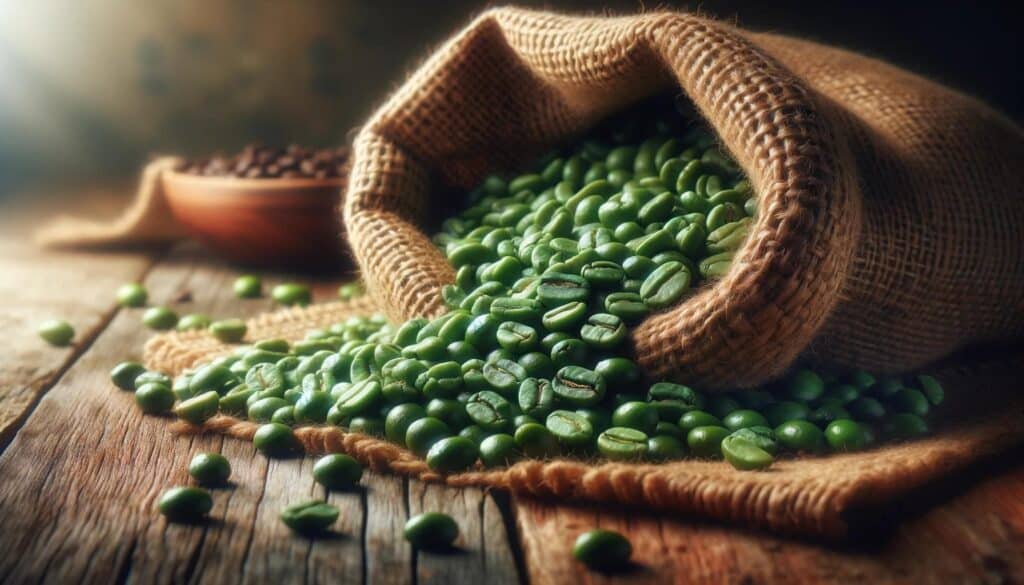
Engaging in DIY projects with green coffee offers coffee enthusiasts a unique opportunity to explore the coffee process hands-on, from home roasting techniques to crafting inventive recipes and making green coffee extract. This hands-on approach not only provides a deeper appreciation of coffee but also allows for customization according to personal taste and health preferences.
Home Roasting Techniques
- Stovetop Roasting: Using a heavy skillet or a cast iron pan, green coffee beans can be roasted over medium heat. The beans should be stirred constantly to ensure even roasting. This method requires close attention to color and smell changes to avoid over-roasting.
- Oven Roasting: Spread green coffee beans on a perforated baking tray and roast in a preheated oven at around 450°F (232°C). The beans need to be checked and stirred every few minutes to ensure even roasting.
- Air Popcorn Popper: A hot air popcorn popper can also double as a coffee roaster. It provides a fast and effective roasting method, usually completing in less than 10 minutes. This method allows for good airflow and even roasting, but capacity is limited.
Tip: Regardless of the method, cooling the beans quickly after reaching the desired roast level is crucial to stop the roasting process. A metal colander can be useful for shaking the beans and exposing them to air.
Creative Recipes Incorporating Green Coffee
- Green Coffee Energy Bars: Blend ground green coffee beans with nuts, oats, dates, and honey or agave syrup for a natural energy bar. The green coffee provides a mild caffeine boost and a unique flavor.
- Green Coffee Smoothie: Incorporate green coffee extract into your morning smoothie. Mix with banana, spinach, almond milk, and a touch of honey for a refreshing and energizing start to the day.
- Green Coffee Marinade: Use brewed green coffee as the base for a marinade. Its acidity can tenderize meat, while its unique flavor pairs well with garlic, smoked paprika, and a hint of brown sugar for an innovative culinary creation.
Making Your Own Green Coffee Extract
- Ingredients: You will need green coffee beans and distilled water. The general ratio is two parts water to one part green coffee beans by weight.
- Preparation: Soak the green coffee beans in water for about 12 hours, then simmer the mixture on low heat for about 15 minutes. This process extracts the chlorogenic acid and other beneficial compounds.
- Straining: Let the mixture cool and then strain it using a fine mesh strainer or cheesecloth to separate the liquid extract from the beans.
- Storage: Store the green coffee extract in a sealed container in the refrigerator. Use it within a week for the best flavor and health benefits.
These DIY projects with green coffee offer a playful and educational way to engage with coffee beyond the usual brewing and consumption. Whether you’re roasting beans to discover your perfect flavor profile, experimenting with green coffee in recipes, or making your own extracts, the possibilities are as rich and varied as coffee itself.
Conclusion: Embracing the World of Green Coffee
Green coffee is stepping out from behind the shadow of roasted coffee, showing off its health perks, eco-friendliness, and becoming a fresh area for coffee lovers and health-focused folks to explore. This journey into the world of green coffee has shown us its many sides, from its untouched state and health benefits to how people enjoy it and its impact on the economy and environment.
Recap of the Key Points About Green Coffee
- Definition and Processing: Green coffee refers to the unroasted seeds of Coffea plants, which retain a higher level of chlorogenic acids and other beneficial compounds compared to roasted coffee.
- Health Benefits: The potential health benefits, including weight loss, blood sugar regulation, and antioxidant properties, have sparked significant interest, though ongoing research is needed to fully understand these effects.
- Consumption and Use: Green coffee is enjoyed in various forms, from traditional brewing methods to modern supplements and extracts, offering versatility in how people can integrate it into their diets.
- Environmental and Economic Impact: The production and consumption of green coffee also touch on broader issues of sustainability and economic development, highlighting the importance of responsible sourcing and consumption practices.
Future of Green Coffee
As more people look for healthy and eco-friendly coffee options, green coffee’s popularity is probably going to rise. More studies might tell us even more about its health benefits. Plus, as the coffee world pays more attention to being green, we might see new and better green coffee stuff coming our way.
Final Thoughts on Integrating Green Coffee into a Healthy Lifestyle
Adding green coffee to your life is a cool way to try its unique qualities while still enjoying a cup of coffee in new forms. Whether you’re roasting it yourself, making fun recipes, or trying out supplements, green coffee is a flexible and fun choice for those watching their health.
But, it’s important to remember to keep things balanced. If you’re thinking about making green coffee a regular thing, talking to a doctor, especially if you have health issues or concerns, is a smart move. This way, you can enjoy green coffee safely and make sure it’s right for you.
In the end, green coffee is more than just a passing craze. It’s part of a bigger shift towards choices that are better for our health, the planet, and our future. Its growing fan base and ongoing research are likely to reveal even more exciting things about it, making it a hot topic for anyone into health, wellness, and the story of coffee that keeps on brewing.
Frequently Asked Questions About Green Coffee
- What is the main difference between green coffee and regular coffee?
- The main difference lies in the processing: green coffee is the raw, unroasted form of coffee beans, retaining a higher level of chlorogenic acids and other beneficial compounds, while regular coffee has been roasted, altering its chemical structure and flavor profile.
- Can green coffee really help with weight loss?
- Green coffee may support weight loss due to its high chlorogenic acid content, which is thought to affect how the body handles blood sugar and metabolism. However, results can vary, and it should be accompanied by a healthy diet and regular exercise for effectiveness.
- How can I incorporate green coffee into my diet?
- You can incorporate green coffee into your diet through supplements, which are available in capsule or tablet form, as well as liquid extracts that can be added to water or other beverages. Alternatively, you can try brewing green coffee beans directly for a unique, herbal-infused coffee experience.
- Are there any side effects of consuming green coffee?
- While green coffee is generally safe for most people, it can cause side effects similar to other caffeinated products, such as jitteriness, upset stomach, or insomnia, especially if consumed in large amounts. It’s recommended to start with a small dose and observe your body’s reaction.
- Is green coffee environmentally friendly?
- Green coffee has a potentially lower environmental impact than roasted coffee due to the omission of the energy-intensive roasting process. However, the sustainability of green coffee also depends on factors like farming practices, transportation, and packaging. Choosing green coffee from sources that prioritize sustainable and ethical practices can help ensure a more environmentally friendly option.
References and Further Reading
- WebMD. (n.d.). Green coffee: Uses, side effects, doses, interactions. Retrieved from https://www.webmd.com/vitamins/ai/ingredientmono-1264/green-coffee
- MedlinePlus. (n.d.). Green coffee. Retrieved from https://medlineplus.gov/druginfo/natural/1264.html
- WebMD. (n.d.). Green coffee: Benefits, risks, and more. Retrieved from https://www.webmd.com/vitamins-and-supplements/green-coffee-uses-and-risks
- Cleveland Clinic. (n.d.). The truth about green coffee bean extract. Retrieved from https://health.clevelandclinic.org/green-coffee-bean-extract
- Healthline. (n.d.). Green coffee: Benefits, weight loss, and side effects. Retrieved from https://www.healthline.com/nutrition/green-coffee
